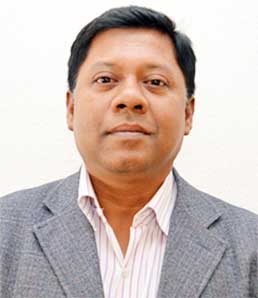
Dr Matiur Rahman :
Erik Olin Wright, a distinguished sociologist renowned for analysing class structures, has provided a framework that can be applied to understand the dynamics of class and occupation in various societies, including Bangladesh. Wright’s approach to class is rooted in a Marxist tradition.
Still, it incorporates a more nuanced and multifaceted understanding of class relations and their implications for social and economic life.
Applying Wright’s theories to the context of Bangladesh offers insightful perspectives on how class and occupation interplay in shaping the country’s socio-economic landscape.
Wright’s class theory focuses on controlling productive assets, such as capital and labour, and the resulting relations of exploitation and domination.
He identifies three primary classes: the bourgeoisie (those who own and control significant productive assets), the proletariat (those who sell their labour for wages), and a variety of intermediate classes that exist due to the complexity of modern economies.
In Bangladesh, these classes can be observed within its rapidly developing economy, characterised by a blend of traditional agriculture, burgeoning industrial sectors, and a significant informal economy.
In rural Bangladesh, the agrarian structure presents a clear class division. Large landowners or wealthy farmers can be likened to Wright’s bourgeoisie, as they control significant agricultural resources and often employ landless labourers, who correspond to the proletariat.
These labourers, who depend on seasonal and frequently precarious work, represent the exploited class within the rural economy.
The middle peasantry, who own modest plots of land and occasionally hire labour, fit into Wright’s intermediate class categories, possessing some means of production but still vulnerable to market fluctuations and land dispossession.
Urban areas in Bangladesh showcase a different class configuration. The rapid growth of the garment industry, a significant economic driver, highlights the dynamics of class and occupation in the industrial sector. Factory owners and multinational corporations embody the bourgeoisie, controlling capital and production processes.
The garment workers, predominantly young women, represent the proletariat, facing exploitation through low wages, long working hours, and inadequate working conditions. Wright’s emphasis on exploitation is evident here, as the surplus value generated by these workers significantly contributes to the profits of factory owners and global retailers. In contrast, the workers themselves receive only a fraction of this value.
Bangladesh’s service sector, which includes a range of occupations from low-paid domestic work to high-status professional roles, further illustrates the complexity of class relations.

High-income professionals, such as doctors, lawyers, and IT specialists, occupy privileged positions with substantial control over their labour and often significant capital. This group aligns with Wright’s intermediate classes’ middle and upper strata.
In contrast, service workers in lower-paid jobs, such as retail employees, call centre operators, and street vendors, face conditions that resemble those of the traditional proletariat, marked by limited control over their work and economic insecurity.
The informal economy, a substantial part of Bangladesh’s labour market, adds another layer to the class structure. Street vendors, rickshaw pullers, and small-scale artisans often operate outside formal regulatory frameworks, experiencing a precarious existence without a stable income or labour protections.
These individuals occupy an ambiguous class position: while they may own the means of their production (like a rickshaw or a small stall), their economic vulnerability and lack of social security align them more closely with the proletariat regarding their exploitation and precarious conditions.
Wright’s concept of contradictory class locations, where individuals occupy positions that have elements of both proletarian and bourgeois classes, is particularly relevant in Bangladesh’s context.
For example, small business owners or self-employed professionals may have some control over their labour and small-scale capital. Yet, they do not wield the economic power of the large bourgeoisie and often face significant financial pressures and instability.
Furthermore, gender and class intersect notably in Bangladesh. Women’s participation in the labour force, particularly in the garment industry, has redefined traditional class roles and highlighted new forms of exploitation.
Despite contributing significantly to the economy, female workers often face additional layers of disadvantage, including gender discrimination, harassment, and lower wages compared to their male counterparts. Wright’s framework can help elucidate these intersections, emphasising how gendered forms of oppression compound class exploitation.
The political landscape in Bangladesh also interacts with class structures. Political patronage and corruption often reinforce class hierarchies, with the elite leveraging their economic power to influence political outcomes, entrenching their dominant position. Wright’s analysis of the relationship between class and state power is pertinent here, as the state often serves the bourgeoisie’s interests while marginalising the working class and poor.
Applying Erik Olin Wright’s theories of class to Bangladesh reveals a multifaceted and dynamic class structure influenced by economic, social, and political factors. From the rural economy to the industrial and service sectors, class and occupation in Bangladesh are characterised by significant exploitation, economic disparities, and precarious labour conditions.
Wright’s nuanced approach allows for a deeper understanding of these complexities, highlighting the intersections of class with gender and the implications of political power in shaping class relations. This analysis underscores the importance of addressing economic and social policies to mitigate exploitation and promote a more equitable society in Bangladesh.
(The writer is a researcher and
development worker.)
